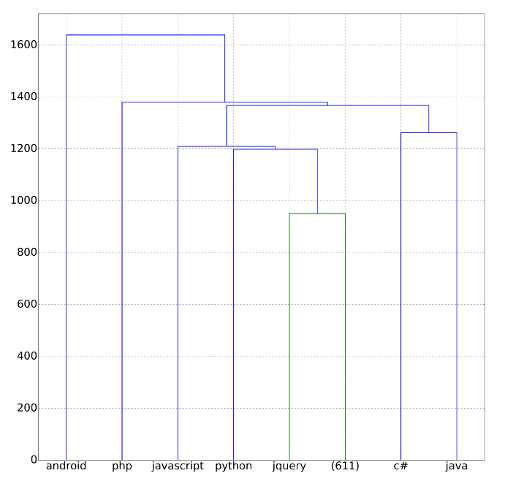Quick Reminder: Clustering
Last updated:Traditional (non-hierachical) Clusters, such as K-Means:
Need to be given the number N of clusters and the initial cluster positions (centroids).
Hierarchical clusters
No need to inform number of clusters and positions, but you need to inform the linkage type.
Can be agglomerative (bottom-up) or divisive (top-down).
Linkage
It's the measure of dissimilarity (distance) between clusters.
single linkage: distance between two groups is the smallest distance between two points in these groups.
- elements at opposite ends of a cluster may be much farther from each other than to elements of other clusters.
complete linkage: distance between two groups is the largest distance between two points in these groups.
- Favours compact clusters with small diameters over long, straggly clusters.
- Sensitive to outliers.
average linkage: distance between two groups is the average distance between two points in these groups.
ward linkage: distance between two groups is the difference between the sum of the squared distances of all points within each group.
- Similar to K-means
Dendrograms
It's a way of representing hierarchical clusters.
Y-axis indicates dissimilarity.
E.g.,in the following picture:
the dissimilarity between
androidand all other concepts is a little over 1600.the dissimilarity between
phpandjavascriptis around 1400.the dissimilarity between
c#andjavais a little over 1200.
 Sample dendrogram (single linkage) of programming concepts.
Sample dendrogram (single linkage) of programming concepts. Created using scipy.cluster.hierarchy.dendrogram
References
Resources
Answer on Cross Validated: Overview of Linkage Methods
- This lists several Linkage methods and useful "metaphors" on how to interpret them.
-
- One answer has 7 points to consider when experimenting with different metrics/linkage functions, written by a guy who is obviously quite knowledgeable on this topic.
Scikit-learn Docs: Clustering with Different Metrics
- A graphical example of the differences in outcomes when you use a metric that's invariant to scaling (such as cosine distance) on data that are proportional to one another.
- Cosine distance just can't separate the data, even when there is absolutely no
Scikit-learn Docs: Clustering with and without Structure
- Graphical examples of the difference it makes when you add a connectivity constraint (such as forcing clustering to include only nearest neighours) to a clustering algorithm.
- This is the same example, using 3D data